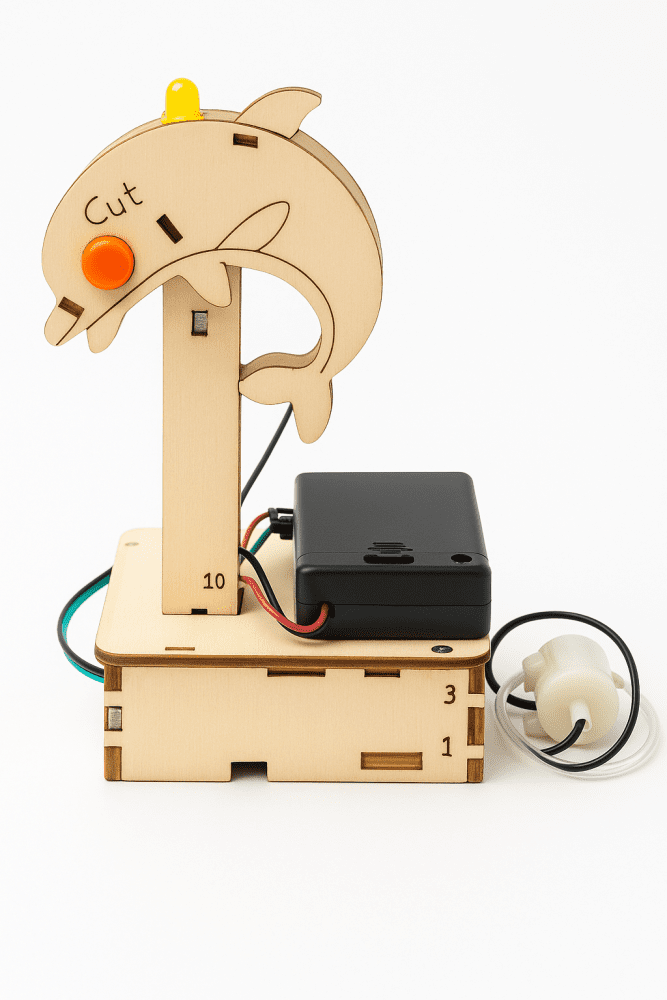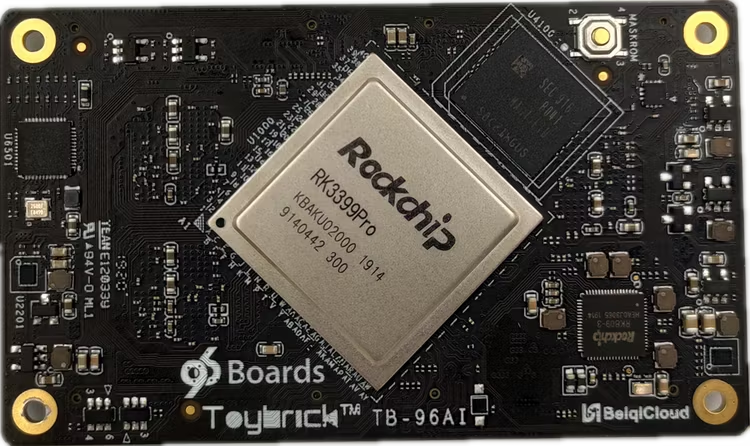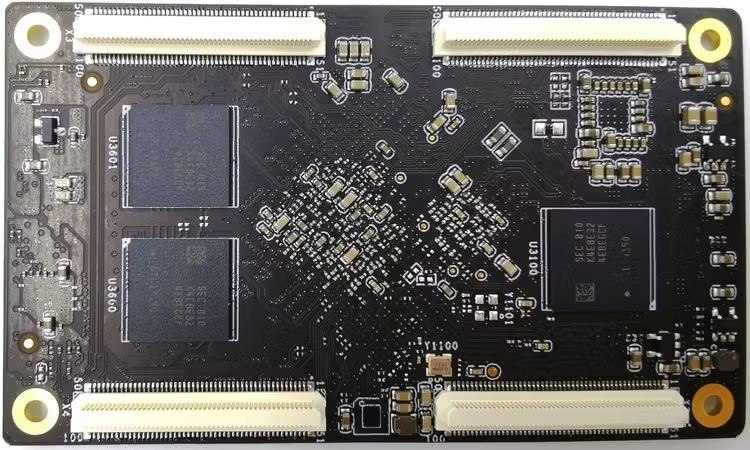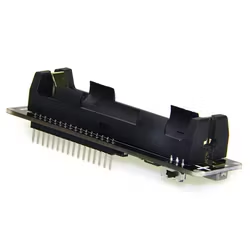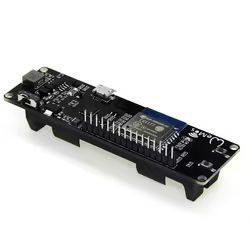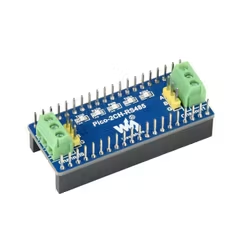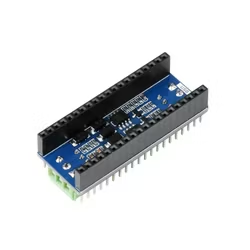Pre-order
TB-96AI is a powerful core board for artificial intelligence. Carrier Board developed can form a complete development board or evaluation board; and the board customized by customers according to actual needs can directly from the industry application motherboard, which can meet industrial automation, UAV, image detection, face recognition, edge computing gateway, cluster server, Intelligent Quotient display, automatic driving, medicine. Application needs of market segments such as health care equipment, robots and intelligent retail.
TB-96AI uses RK3399Pro as the main control chip and TB-96AIoT uses RK1808 as the main control chip.
Features
- Six-core 64-bit processor, superior general-purpose computing power
- Dual-core ARM Cortex-A72 MPcore processor and quad-core ARM Cortex-A53 MPcore processor are high-performance, low-power and cache application, processors.
- Two CPU clusters. Big cluster with dual-coreCortex-A72 is optimized for high-performance and little cluster with quad-core Cortex-A53 is optimized for low power
- Full implementation of the ARM architecture v8-A instruction set, ARM Neon Advanced SIMD (single instruction, multiple data) support for accelerating media and signal processing
- Supporting 8 bit/16 bit operation, AI computing power up to 3.0 TOPs (INT8 Inference)
- Full load calculation is strong and light load operation power consumption is low.
- Compatible with Caffe/Mxnet/TensorFlow model, it can support multiple frameworks, support mainstream layer types, and add custom layer easily
- Provide easy-to-use development tools, PC can complete model conversion, performance prediction, accuracy verification.
- Provide AI application development interface: support Android NN API, RKNN cross-platform API, Linux support TensorFlow development;
- Powerful Multimedia Processing Performance
- Integrated quad-core ARM Mali-T860MP4 GPU, support OpenGL ES1.1/2.0/3.0, OpenCL1.2, Directx11.1, etc., with more bandwidth compression technology
- Strong hardware codec capability
- Support 4K VP9 and 4K 10bits H265/H264 video decoding up to 60fps
- Support 1080P multi-format video decoding (VC-1, MPEG-1/2/4, VP8)
- Support 1080P video encoding, support H.264, VP8 format
- Multiple video input and output interfaces
- Dual camera interface: two MIPI-CSI input interfaces with two ISP image processors
- Display output interface: Embed two VOPs, support dual-screen simultaneous/dual-screen display, and can choose to output from the following display interface.
- Rich expansion interface
- Type-C/DP×1,OTG
- USB2.0×2,HOST
- USB3.0×1,According to the RK3399Pro design, the NPU needs to be mounted on the USB3.0, so the USB3.0 needs to be connected back to the NPU. If you need to extend the USB3.0 interface, you need to plug in the HUB.
- SDMMC×1
- SPI×1
- CPU Debug UART×1,NPU Debug UART×1
- UART×1
- I2S×1
- SDIO×1
- I2C×1
- PCIe×1
- PWM×2
- GPIO,For detailed GPIO definition, please refer to interface definition.
- ADC×3,One for buttons, one for headset microphone detection, and one for user-definable use
- High-speed on-board connector for more stability and reliability
- 4 Panasonic high-speed onboard connectors for higher speed signal stability
- The core board can be fixed by 4 screw posts for various working environments.
- Support for multiple operating systems
- Support Android, Linux, Ubuntu
- Support U disk upgrade through USB interface
- Hardware related information
- Circuit schematic reference design
- Connector PCB package
- Core board size
- Pin definition, interface package
- Software related information
- Software development guide.pdf
- Tools. RK driver assistant, firmware upgrade tool, etc
- Firmware. Android firmware, Linux firmware
- Source code. Android SDK source code
Specifications
Basic Parameters SoC Rockchip RK3399Pro GPU ARM® Mali-T860 MP4 Quad-core GPU
Support OpenGL ES1.1/2.0/3.0/3.1, OpenVG1.1, OpenCL, DX11
Support AFBC (frame buffer compression)CPU Dual-core Cortex-A72 up to 1.8GHz
Quad-core Cortex-A53 up to 1.4GHzNPU Support 8bit/16bit operation, computing power up to 3.0TOPS
Full load computing power, low load operation power consumption is low
Compatible with Caffe/Mxnet/TensorFlow model, support multiclass framework, support mainstream layer type, easy to add a custom layer
Provides easy-to-use development tools, PC-based model conversion, performance estimation, and accuracy verification
Provide AI application development interface: support Android NN API, provide RKNN cross-platform API, Linux support TensorFlow development;VPU Support 4K VP9 and 4K 10bits H265/H264 video decoding, up to 60fps
1080P multi-format video decoding (WMV, MPEG-1/2/4, VP8)
1080P video encoding, support H.264, VP8 format
Video post processor: de-interlacing, denoising, edge/detail/color optimizationRAM Optional configuration with the following options:
3GB LPDRR3(CPU 2GB + NPU 1GB)
8GB LPDDR3(CPU 4GB + NPU 4GB)Flash Optional configuration with the following options:
16GB eMMC
32GB eMMC
64GB eMMC
128GB eMMCHardware Characteristics Ethernet Built-in Gigabit Ethernet PHY chip, 10/100/1000Mbps adaptive Camera Interface MIPI-CSI×2,Dual camera interface (built-in dual hardware ISP, up to single 13Mpixel or dual 8Mpixel) Display Interface MIPI-DSI
eDP
DP
HDMI (Support 480p/480i/576p/576i/720p/1080p/1080i/4k, support RGB format)Audio Port I2S0:Support user extended use
I2S1:Speaker×1, Headphone×1, MIC×1
I2S2:HDMI interface audio output; DP interface audio output;Type-C USB3.0/DisplayPort 1.2,OTG USB USB3.0×1 (according to RK3399Pro design, NPU needs to be mounted on USB3.0, so USB3.0 needs to connect back to NPU, if you need to expand USB3.0 interface, you need external HUB);
USB2.0×2, HOSTExtension Port SDMMC(TF Card)×1;
SPI×1;
UART×3,One of the CPU Debug UARTs, one NPU Debug UART;
I2C×6;
SDIO×1;
PCIe×1;
PWM×2;
GPIO,For detailed GPIO definitions, please refer to the interface definition;
ADC×3,One for buttons, one for headset microphone detection, and one for user-definable use;Power input DC 5V
ECCN/HTS
| ECCN | 3A991.a |
| HSCODE | 8543709990 |
| UPC |

 English
English
